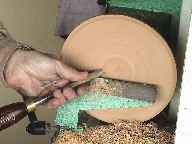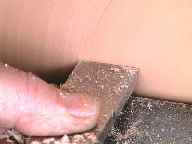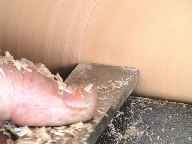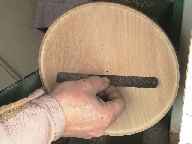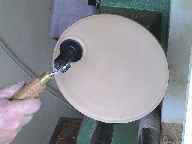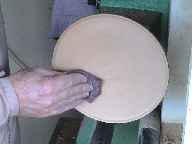DiscoStu
Established Member
So as per the title I've made a checker board and I will be turning it into a teapot coaster / mat / trivet.
The surfaces on the checker board aren't completely flat what is the best tool to flatten this with on the lathe. I'm paranoid about getting a catch and ruining it. I didn't know if I should go for a roughing gouge to start with or a scraper? I'm not going near it with a skew chisel - only found them to be evil so far! Or should I use the parting tool and go in from the side (as I would for parting).
Thanks in advance.
Sent from my iPhone using Tapatalk
The surfaces on the checker board aren't completely flat what is the best tool to flatten this with on the lathe. I'm paranoid about getting a catch and ruining it. I didn't know if I should go for a roughing gouge to start with or a scraper? I'm not going near it with a skew chisel - only found them to be evil so far! Or should I use the parting tool and go in from the side (as I would for parting).
Thanks in advance.
Sent from my iPhone using Tapatalk





